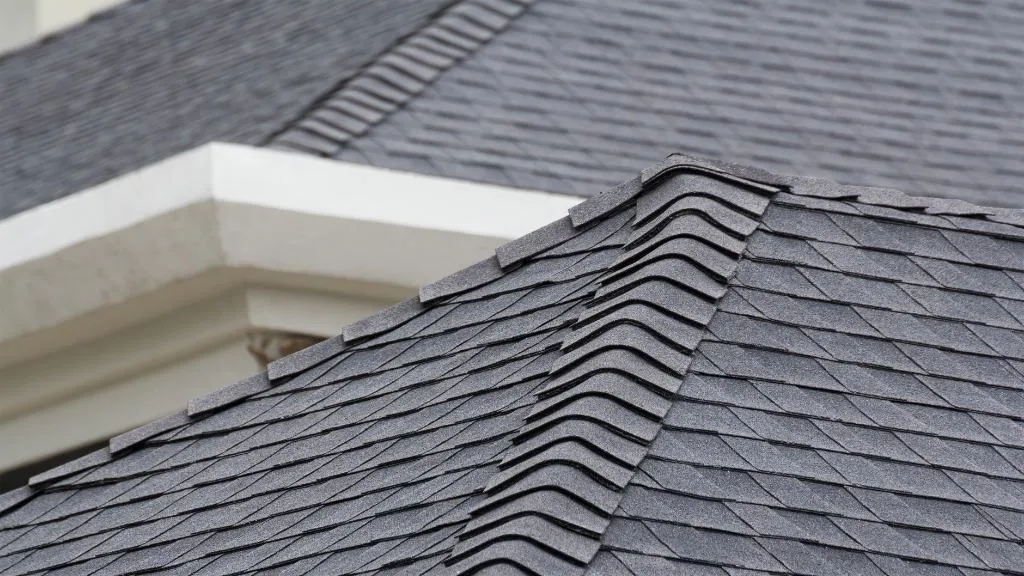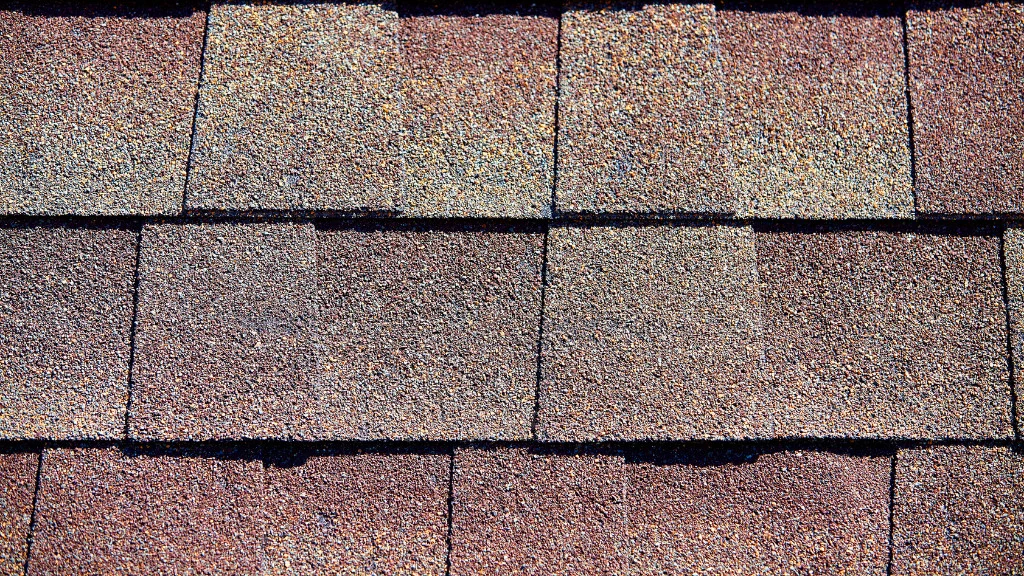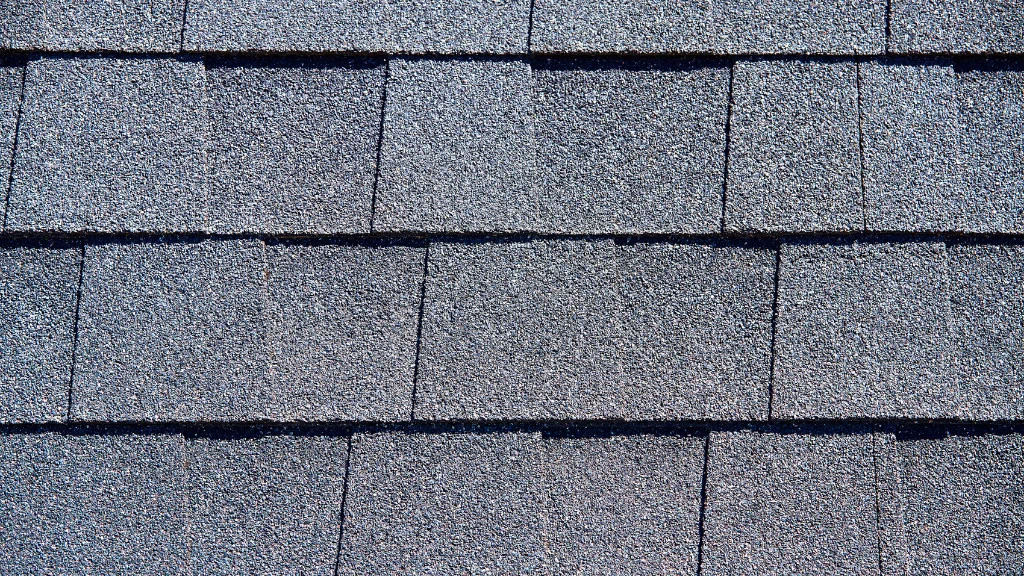
In the roofing industry, there have been a few changes in recent years that have sparked some great debates. One of these is whether to use 3 Tab vs Dimensional Laminate Shingles for your home.
- What are 3 Tab Shingles?
- Functions of 3 Tab Shingles
- What are Dimensional Shingles?
- Functions of Dimensional Laminate Shingles
- What Are the Benefits of Using Dimensional Laminate Shingles?
- What Are the Benefits of Using 3 Tab Shingles
- 3 Tab vs Dimensional Laminate Shingles -The Best Choice Depends On You And Your Home
There are pros and cons to both types, but this blog post will focus primarily on comparing them side by side so you can make an informed decision when it comes time to purchase new roofing materials!
What are 3 Tab Shingles?
Traditionally, the main type of shingle has been a three-tab style that is used primarily in residential homes.
These are laid down in rows and held into place with two nails per tab (for a total of six nails per shingle).
In most cases these were either white or brown depending on your preference when you originally had the shingles installed.
These are usually found in most neighborhoods of new homes, but they do not offer as much protection from weather elements or fire damage as other types of roof materials.

Functions of 3 Tab Shingles
Shingles are protective coverings that help protect our homes against harsh weather.
Some shingles can last for over 50 years, but most roofs only last about 20 years before you have to start thinking about roof replacement.
- The 3 tab shingles are one of the least expensive types of shingles.
- These roofing materials are less durable than other kinds, but they do help reduce your installation costs significantly.
- 3 tab shingles are also known as dimensional shingles because they are above 3 inches in width and depth.
- They provide an attractive appearance for homes that have a traditional design.
- 3 tab roofing materials are available in asphalt, which makes them good options for homes that are not located in very windy areas.
- This type of shingle is also known as a laminated shingle because it consists of multiple layers.
- Although these products cost between $75 and $90 per square, they provide effective protection against rain and snow.
- The 3 tab type is good for areas where only light snow accumulates because they are not very snow load resistant.
- These shingles can last from 10 to 15 years before you have to start worrying about replacing them.
- In colder climates, this product does not work very well on homes with steeper roofs because the pieces often curl up when the temperature drops.
- This material is also vulnerable to damage from hail, ice dams and high winds.
- The 3 tab shingle is a good option if you want a low maintenance roof that still offers protection.
- The shingles can last for 7 to 10 years before having to be replaced, but they should not be used in areas where heavy snowfall is common.
This product also does not work well in regions with high wind speeds because it can blow off of the roof very easily, especially on steeper roofs.
This material should only be used on homes with gentle slopes and low wind resistance ratings.
Also known as laminated shingles, 3 tab or dimensional shingles consist of multiple layers. They provide an attractive appearance and reduce installation costs significantly.
What are Dimensional Shingles?
Dimensional shingles have become increasingly popular over recent years for a number of reasons.
They are made with more material than traditional styles, which provides greater durability and helps to protect against the elements.
Dimensional shingles also offer better energy efficiency ratings because of their thicker profile. This can save homeowners money on heating bills over time!
As you may have guessed by now, dimensional shingles come in many different colors and styles to choose from.
If you are looking for a more modern, sleek appearance on your home then this is the type of shingle you should consider!

Functions of Dimensional Laminate Shingles
Dimensional shingles form a relatively new product line within the roofing industry. Plywood and particle board are typically used to manufacture dimensional shingles, due to their light weight and overall durability.
There are several types of dimensional shingle products available for installation on roofs or walls. These include: Wood Shingle Siding, Faux Wood Siding, Woodgrain or Texture Imitation Siding and Brick/Stone Look-Alike Siding.
Dimensional shingles are used for both flat and low-sloped roofs.
Flat roofs typically have a minimum pitch of .5% slope per foot, with an allowable maximum 5% slope allowed with dimensional shingles.
Low slope roofs require slopes that allow water to run off quickly. Generally roof pitches should not exceed 3/12 (3 inches rise over 12 inches run).
Dimensional shingles are typically manufactured with a vertical cut and a horizontal cut.
The vertical laminate is typically installed over the sheathing and the horizontal cuts are installed over this layer facing up.
This creates a smooth installation surface for all succeeding courses of dimensional shingles.
Dimensional shingles can also be manufactured with a surface that has a high-quality imitation of wood grain.
This is achieved by running the grain vertically on the shingle and providing a flat coating to receive subsequent coarse shingles.
With so many dimensional products available, it is important for the buyer to understand which type of product best suits their individual needs.
The dimensional shingle product line is available in a diverse range of styles and colors.
It is important for the buyer to decide whether they need a visually pleasing roof or a low maintenance roof, as these are two different products that provide vastly different performance capabilities.
Dimensional shingles are frequently used as an alternative to more expensive types of roofing materials.
Dimensional shingles are considerably less expensive than slate, tile, or metal roofs. They can also be used as alternatives to cedar or vinyl siding.
What Are the Benefits of Using Dimensional Laminate Shingles?
Many shingle manufacturers produce dimensional (thick) laminate shingles. Read on to learn the advantages of using these types of shingles.
Dimensional laminates compare with dimensional wood shakes and come in a variety of colors, styles, and textures that can mimic or enhance your home’s exterior.
These thick laminates are a great compromise between a traditional three-tab asphalt shingle and a much more expensive architectural or steel roofing material.
Some of the benefits of using dimensional laminates include:
Low Cost
Dimensional laminates can be found in most home improvement stores, such as Home Depot or Lowe’s, at competitive prices.
Dimensional laminates are cost-effective because they can be installed quickly and easily by homeowners, rather than needing to hire a contractor.
Weather Resistance
Dimensional laminates generally only weigh around 10 pounds – much lighter than traditional dimensional wood shakes or steel roofing.
That means you won’t have to worry about them affecting the structural integrity of your home or adding additional stress to it.
Style Options
Dimensional laminates come in a variety of colors, textures, and styles. Most are designed to mimic the look of traditional dimensional wood shakes at a much lower cost.
Others have cutouts that create interesting shadow lines on your roof when sunlight is cast upon it. You can also find dimensional laminates in a variety of colors.
Installation
Anyone can install a dimensional laminate, even if you don’t have experience with roofing.
Dimensional laminates come pre-cut and labeled by row to eliminate confusion when installing them. The following steps will help you get started:
1) Start by removing any existing shingles on your roof. It’s best to remove the entire row at the end of your roof and work up from there, rather than just removing a few shingles at a time.
2) Lay down your starter course, which will consist of one full-length shingle and a half length shingle at either end. Align the full-length shingles on top of your starter course, so that you can nail them in place.
3) Lay a row of dimensional laminates by starting with a full length shingle and a half length shingle at either end. Nail these in place using 1 inch nails, every 6 to 8 inches on center.
4) Nail down your final course on top of the dimensional laminates you installed in the previous step. Make sure to offset the joints between courses by one-half shingle, so that water can flow freely off your roof if it rains.
5) Seal any seams or cutouts on your dimensional laminates with a tube of dimensional roofing cement. This will prevent leaks and drafts from occurring between your courses.
Dimensional shingles can add character, color, and style to your home for little cost.
They are ideally suited for homeowners who don’t want to deal with the hassle of installing or maintaining traditional asphalt shingles or expensive steel roofing options.
With the proper tools, you can have quality dimensional shingles installed on your home in no time.
What Are the Benefits of Using 3 Tab Shingles
3 tab shingles are manufactured in a single piece, thus creating a uniform roof. This provides several benefits when compared to other types of shingles.
Ease of Installation
3 tab shingles are installed using three nails per tab, making the installation process much easier than installing dimensional lumber. The result is a stronger, more durable roof with fewer leaks.
Less Waste
Shingles are packaged in bundles made of between 60 and 120 shingles.
Since 3 tab shingles are all the same size, manufacturers can use smaller bundles that have up to 30 percent less waste than dimensional lumber.
This is good for the environment because it reduces carbon emissions created by the transportation of the material.
More Amenities
Dimensional shingles are not uniform, which makes color variation and special shapes difficult to produce.
This limits what can be done with dimensional lumber, but 3 tab shingles have no such limitations.
Manufacturers can use any color or shape desired, allowing designers to create more unique homes without sacrificing the durability and quality of materials.
Less Weight
Bundles of dimensional lumber weight between 12 and 20 pounds, but bundles of 3 tab shingles only weigh 8 to 10 pounds.
This makes it much easier to transport the lighter bundles to construction sites.
Once they are there, each bundle covers more square feet than a bundle of dimensional shingles, which requires fewer bundles.
Lower Prices
When the cost of the materials is weighed against the benefits they provide, 3 tab shingles are less expensive than dimensional lumber.
This gives builders more money to spend on other parts of the construction process.
3 Tab vs Dimensional Laminate Shingles –The Best Choice Depends On You And Your Home
In most cases homeowners tend to stick with what they know when it comes time to replace their roof.
However, in recent years there have been a number of advancements in roofing materials that make it easier to upgrade your home without having to break the bank.
If you are unsure what type of shingle is best suited for your needs then take some time to research both options and compare them side by side!

